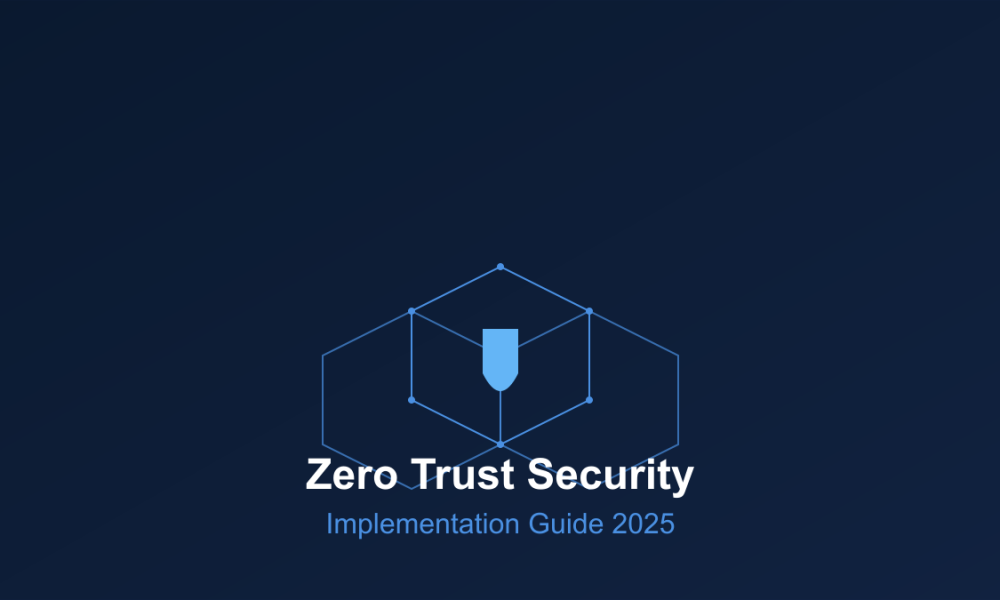In today’s rapidly evolving digital landscape, traditional security models are increasingly falling short in protecting against modern cyber threats. As a result, Zero Trust Security has emerged as a vital framework that replaces the outdated “trust but verify” approach. Therefore, this comprehensive guide will help you understand and implement Zero Trust Security in your business environment.
What is Zero Trust Security?
First and foremost, Zero Trust Security follows the principle of “never trust, always verify.” Subsequently, this security model recognizes that threats can come from both inside and outside traditional network boundaries. Moreover, according to Gartner’s recent research, 60% of organizations will embrace Zero Trust Security by 2025.
Core Principles of Zero Trust
- Initially, verify explicitly: Consequently, always authenticate and authorize based on all available data points
- Furthermore, use least privilege access: Hence, limit user access with Just-In-Time and Just-Enough-Access
- Finally, assume breach: Therefore, minimize breach impact through segmentation and encryption
Planning Your Zero Trust Implementation
Assessment Phase
Before starting your Zero Trust Security implementation, your organization must first conduct a thorough assessment. Additionally, this evaluation should include:
- Asset Inventory
- First, document all hardware and software assets
- Then, map data flows and access patterns
- Finally, identify critical resources and sensitive data
- Risk Assessment
- Initially, evaluate current security controls
- Subsequently, identify potential vulnerabilities
- Lastly, assess compliance requirements
Implementation Strategy
1. Identity and Access Management (IAM)
To begin with, strong identity verification forms the foundation of Zero Trust Security. Therefore, implement:
- Firstly, multi-factor authentication (MFA) across all applications
- Secondly, role-based access control (RBAC)
- Finally, just-in-time (JIT) access provisioning
2. Network Segmentation
Furthermore, proper network division helps contain potential breaches. Consequently, you should:
- Initially, implement network microsegmentation
- Then, define security boundaries around resources
- Additionally, deploy software-defined perimeters (SDP)
3. Resource Protection
Moreover, all resources need protection, regardless of location. Therefore:
- First, encrypt data when stored and moving
- Subsequently, implement app-level security
- Finally, deploy endpoint protection solutions
Best Practices for Implementation
1. Phased Approach
To start with, begin with a pilot program:
- Initially, select a specific department
- Then, document what you learn
- Subsequently, grow based on success metrics
2. Continuous Monitoring
Additionally, implement thorough monitoring:
- First, deploy security monitoring solutions
- Then, establish behavior tracking
- Consequently, create automated responses
3. Employee Training
Furthermore, success depends on how well users adopt the system:
- Initially, conduct regular security training
- Then, provide clear guides
- Finally, set up help channels
Common Implementation Challenges
1. Technical Challenges
However, be prepared for these technical issues:
- Firstly, old system integration
- Moreover, speed and performance concerns
- Additionally, tool compatibility problems
2. Organizational Challenges
Furthermore, consider these organizational hurdles:
- Initially, limited resources
- Subsequently, user resistance
- Finally, process adjustments
Measuring Success
Therefore, define and track these key metrics:
- First, security incident reduction
- Then, time to detect problems
- Additionally, time to respond
- Finally, user satisfaction
Future Considerations
Moreover, stay current with emerging trends:
- Initially, AI-powered security analysis
- Subsequently, quantum-ready encryption
- Finally, advanced threat detection
Compliance and Regulations
Furthermore, ensure alignment with:
- First, GDPR requirements
- Then, HIPAA compliance
- Finally, industry-specific rules
Additional Resources
For more information, consult these trusted sources:
Conclusion
In conclusion, implementing Zero Trust Security requires careful planning and ongoing commitment. However, the investment provides strong protection against modern cyber threats. Therefore, start your implementation journey with a clear strategy, focusing on quick wins while building toward full coverage.
Remember: Zero Trust Security isn’t a one-time project but rather an ongoing journey of improvement and adaptation to new threats.

